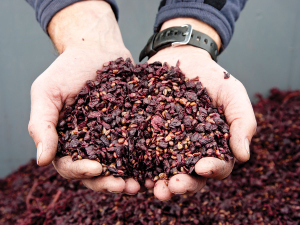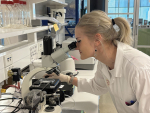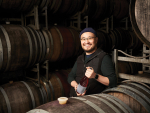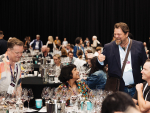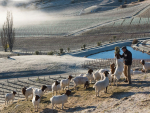Wine companies have been "very generous" in gifting grape marc to a project working to transform the winemaking byproduct.
But Professor Paul Kilmartin looks forward to a time when they're less willing to part with it. "We hopw it will be valuable in the future," says the lead scientist in the Waste to Treasure project.
The $9.8 million initiative, led by Waipapa Taumata Rau, the University of Auckland (UoA), received funding from the Ministry of Business, Innovation and Employment's Endeavour Fund in spring 2023. It aims to transform grape marc - the stems, skins and seeds left over from winemaking - into food additives, with antioxidant biopolymers to extened the shelf-life of food, and grape proteins and bioactive polyphenols as dietary ingredients in their own right. The second aim is to create value out of fine chemicals and surfactants, and the third is to introduce novel high value paper products with key industry partners, providing fire-retardant and antimicrobial properties and integrated paper-based electronics.
The idea is to use every component of the grape marc, growing the sustainability and value of the industry, Paul says. "There might just be one or two that are economically viable and environmentally sound that drive what we do in the future with grape marc." Two research fellows, Dr Billy Yi Yang and Dr Ralph Gonzales, have been recruited for Waste to Treasure, along with a number of PhD candidates, each working within one of the three threads of research. "When I hear from each of the researchers, I am always amazed at how far they have advanced," Paul says, explaining that each scientist comes from a background that offers different insights into the project aims. He is also talking to other organisations working with grape marc for the likes of compost and animal feed, and believes those projects will also be part of the solution for the wine industry in the future.
The project's first foray into handling grape marc was during the 2024 vintage, at the university's Wine Science lab at Goldie Estate on Waiheke Island. Marc was processed by the kilogram then, with researchers using a food dehydrator and separating skins and seeds by hand. They have purchased a grape marc deseeder for the upcoming harvest and will be able to work in the 10s or hundreds of kilograms.
Besides UoA scientists, the team includes researchers from AUT, Crown Research Institute Scion, and the University of Canterbury. Bragato Research Institute is a partner on the project, with a role to interface with the wine industry.





